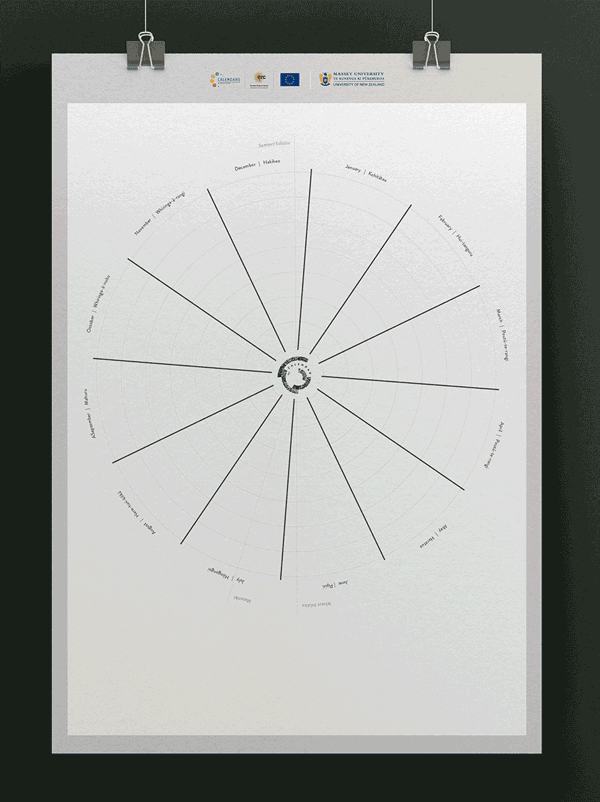Calendars Project
CALENDARS PROJECT
for Massey University (NZ) and University of Bergen (Norway)
“The CALENDARS project empirically explores the relationship between different institutions’ ideas of seasons and their successful climate change adaptation through an in-depth comparative study of a set of institutions on New Zealand’s Coromandel Peninsula as well is in Bergen in Norway. CALENDARS is steered by the overall objective to advance knowledge and understanding of the way seasonal representations shape and are shaped by institutions, and critically appraise the quality of these representations for contributing to successful adaptation to seasonal change. Edgar was instrumental in distilling oftentimes complex connections into clear visual representations. His fresh and new take within an academic context always ensured that the key messages were conveyed clearly. Anyone working with Edgar quickly realises that he is an extremely sharp thinker with a desire to make information easily accessible.”
• Academic research tool •
‘what could be the friction?’
- identify the Problem, find a solution
Researchers Dr Paul and Kerstie, in their first meeting with The Visual Thinking Lab, when introducing the project, one of the first questions we asked was, what is the friction in the project, that is, what would be the invisible force that would discourage guests from being able to contribute to the project. The answer was longevity (1 year), and project credibility.
The Visual Thinking Lab, after a co-design exercise, based on a customized double diamond process, suggested creating a small product that would be an "Our Calendar Kit" with its own identity that conveys to the guest the credibility of the project, a sense of mission, exclusivity, and ownership.
A poster of an annual calendar was created with a refined and simple design, offering you a canvas to express yourself, along with a collection of colored pencils as a possible expression tool. At the end of one year, each poster will be returned to the researchers for analysis and consecutively they will have individual expressions of each participant. The figure on the side is an exercise to compare annual activities and cultural expressions from two different cultures.
• Academic Figure •
“Institutional cultures mediate how people relate to institutions' rules in addressing climate change. Through this figure Edgar made it possible to visualise eight sites of interaction between climate change and institutional cultures, where cultures affect how climate change is interpreted and taken up in institutions and are at the same time sites where institutional changes take place. Future studies can situate themselves relative to these points of reference using the figure created by Edgar.”
• Workshop facilitation •
Journey map diagram
The workshop facilitation practice, in this case, was to create an action plan with the purpose of acquiring behavioral and emotional analysis outcomes through the seasons, among local students in Thames New Zealand. Initially, a journey map was created to help to define the desired expectations of each session and later guide those involved in their mission. During the sessions, there was a constant behavioral observation in order to create agile interventions to guarantee the interest and involvement of the participants.
The workshop's mission was to involve participants in the practice of digging through memories of important moments in their lives throughout the year and how to represent those memories through carving.
The 3-day workshop was split into 3 phases - Why, What, and the connection with nature / Papatūānuku.
“Edgar’s ability to connect with people has made him an important asset as workshop facilitator where he is able to bring together facts, interpretations, views, opinions, and beliefs like no other.”






